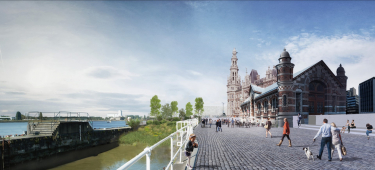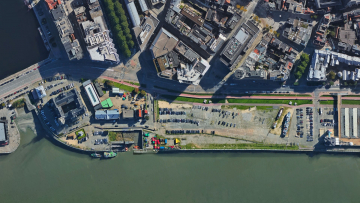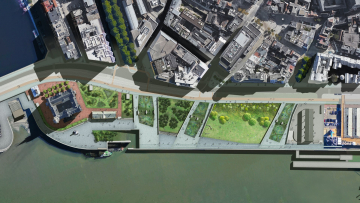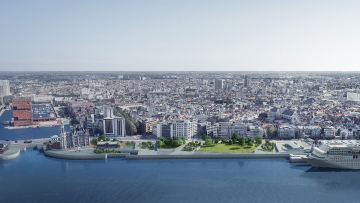The Loodswezen site is one of the seven sub-areas that are part of the Scheldekaaien masterplan in Antwerp. At this unique waterfront location, boats used to be pulled into the city through three inner harbors. The historical traces are still visible today and serve as the basis for the new landscape design. Therefore, we aim to connect the city with the Schelde at this specific location. If everything goes as planned, the works will start in early 2024.



The design also has a pronounced and clear climate ambition. Thus, cooling areas are designed and much attention is paid to planting choices.
AG Vespa








